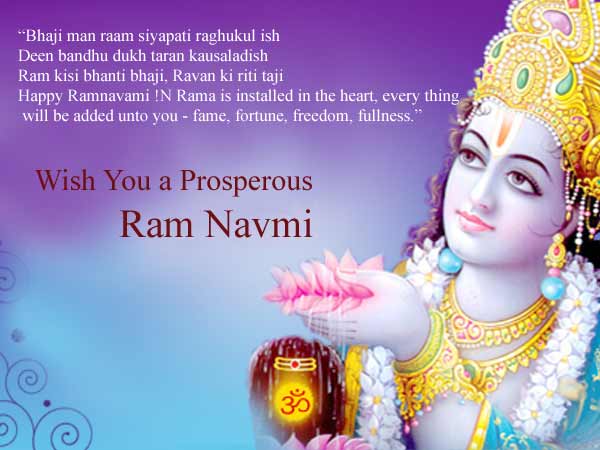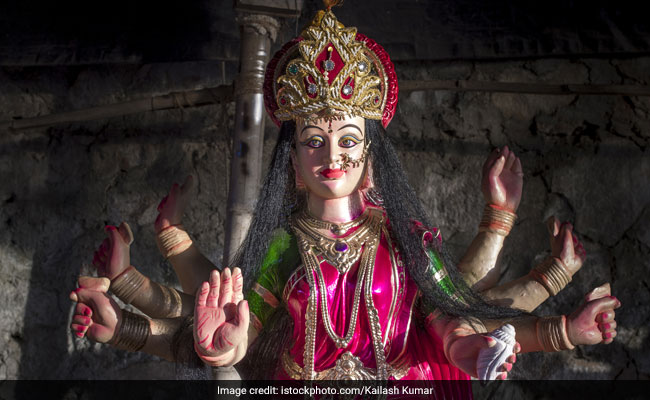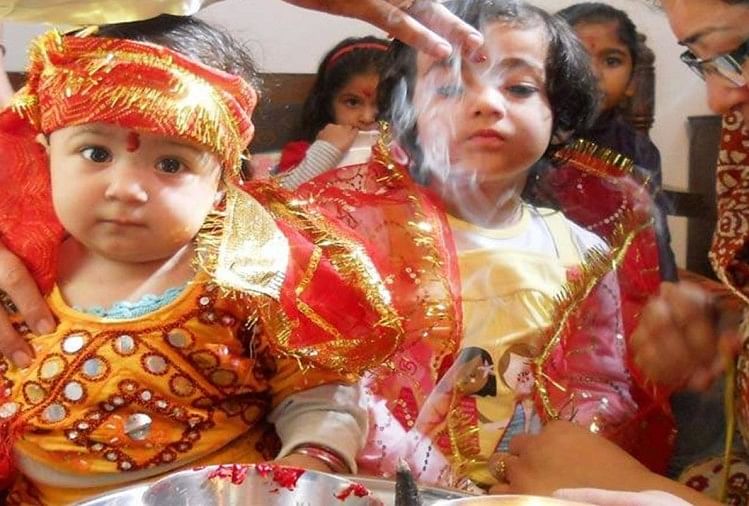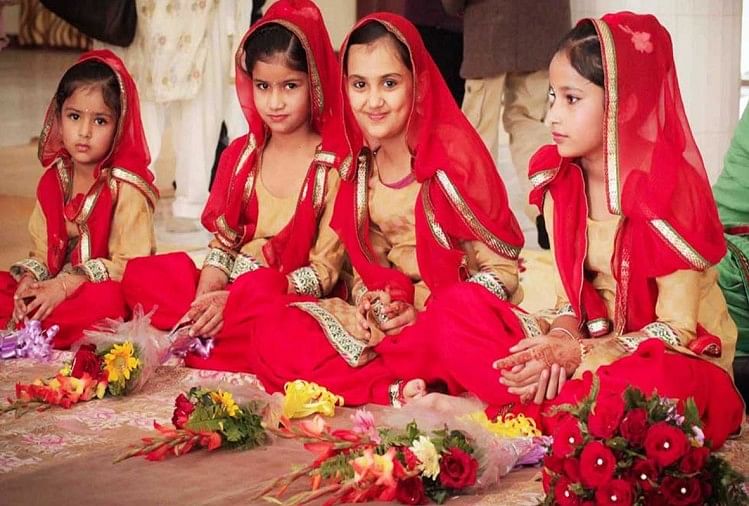


Word Count: 0

Kanjak is celebrated on either ashtami or navami (the eighth or ninth day) of Navratri. It's another way of paying gratitude to the Supreme Goddess. Nine girls are welcomed into the house and are showered with delicious bhog and gifts. These young girls who haven't yet hit puberty are worshipped as the embodiment of the nine divine forms of Goddess Durga: Sailaputri, Brahmacharini, Andraghanta, Kusamanda, Skandamata, Katyayani, Kalarati, Mahagauri and Siddhidatri.
Nowadays, one can also see little boys accompanying the girls in the Kanjak. After washing their feet with hands, the elders in the house tie a moli (red thread) around their wrists, and apply a tika on their foreheads. The girls are then served a variety of delicacies such as poori, kala chana, and halwa. They are also showered with many gifts like cute pencil boxes, hair clips, tiffin box etc.
The ritual goes back centuries in time. According to scriptures, when the earth was distressed by the demon king Kalasura, it was Goddess Durga who in her incarnation of a young girl defeated the demon. Unable to battle the mighty Kalasura, the Gods in the heaven approached Goddess Durga to seek her help. She assumed the form of a young girl or Kumari and stood in front of Kalasura. Blinded by the overwhelming power, Kalasura thought how could a little girl defeat the invincible ruler such as him, He let down his guards, thinking he would take her down without much effort. The little Goddess pulled out her sword and killed him and saved the earth from this despotic demon.
Puffy and piping hot pooris made of either maida or atta are served to the young girls as part of the bhog. Another Kanjak staple is a delicious suji halwa made by semolina whisked in milk and ghee. The delicious halwa is usually flavoured with cardamom and garnished with almond. One can also add pistachio or raisins. Delicious kala chana fried in a pool of heartwarming spices are also an intrinsic part of Kanjak bhog. A few pieces of coconuts and dried fruits are also served to the little ones. Some families also give ladoos or chocolates as additional sweet treats.
Happy Ashtami 2018 everybody!



Word Count: 1
Today is the eighth day of Navratri .It is also celebrated as Maha Durgastami in many parts of India specially Bengal.Mahagauri is the eighth manifestation of goddess Durga and amongst the Navadurgas. Mahagauri is worshipped on the eighth day of Navratri. Her extremely fair complexion is similar to a white conch, the moon or Jasmine flower. Maa Mahagauri radiates peace and compassion, has four arms, and is the fairest among all the forms of Goddess Durga Shakti. The gesture of her upper right hand denotes that she is banishing fear, whereas she holds a trident (Trishul) in her lower-right hand. Besides, Maa Mahagauri holds a Damaru (drum) in the upper left hand, while the lower left hand is in the pose of granting boons. This goddess is mostly dressed in a white sari, and she often rides a bull.
As per the traditional story, Goddess Parvati practiced the most severe penance with the desire to have Lord Shiva as her divine consort. As a result of the severe penance, the colour of her body became black. Lord Shiva was highly pleased by her penance, and thus he washed Mata Parvati's body with the holy water of river Ganga. Hence, she regained her fair complexion.
And thereafter, she was known as Maa Mahagauri. Goddess Durga and her forms are all powerful. You can remove your sufferings by pleasing them.All the sins of the devotee are washed away by worshipping this goddess on the 8th day of Navratri . The devotees of Maa Mahagauri, therefore, become pure in all aspects. Maa Mahagauri channelises the thought waves of her devotees towards the path of virtue i.e. goodness, and she destroys Asat i.e. unholy or immoral thoughts of the worshipper.
Kanya pooja: Some devotees also observe kanya poojan on Ashtami. Young girls are invited (at least nine) and devotees worship these girls as forms of the goddess. They are offered clothes, fruits, money, and a meal prepared in desi ghee.
All the gods and sages worship this form of the goddess by chanting, "Sarvamangal Mangaleya, Shiva Saevartha Sadhike. Sharaneya Ambeyagauri Narayani Namastute. The goddess blesses the devotees who worship her with peaceful life and burn all their sins.Ashtami has a special significance in the nine divine nights of Navratri. Some people concludete Navratra on Ashtami and some do it on Navami. Those who perform Ashtami, conclude the fast by worshiping goddess Mahagauri. People worship her with faith and devotion.
Mahagauri Mantra
hrete Vrishe Samrudha Shretambradhara Shuchi |
Mahagauri Shubham Dghyanmahadevapramodada ||
Eighth day of navratri puja is also known as Maha Pooja during Navratri. The eight day of Navratri or Ashtami is dedicated to Goddess Mahagauri, who is the eight Avatar of nine goddess. She is the wife of lord Shiva. Her name denotes, why she is called by the name Mahagauri, "Maha means extreme or great and "Gauri means white complexion. She has the extreme white complexion like moon or snow. Goddess Mahagauri has other names also which are Shwetambardhara, Vrisharudha, Chaturbhuji and Shambhavi. The reasons behind these names are, she dressed white cloths so called as "Shwetambardhara, rides the bull so known as "Vrisharudha and have four hands so knows as "Chaturbhuji.

According to mythology, legend says that Parvati want to get lord Shiva as her husband so she left all the comforts of the palace and started the tough penance in the forest. While performing the severe penance for many years, Parvati's body turned black due to dust, soil and leaves of trees. At the last, lord Shiva pleased with her hard penance and blessed her that he would marry to her. Lord Shiva cleaned the goddess Parvati with the sacred water of holy Ganga. All the dust, soil and dirt were washed away from the body of Goddess Parvati and she got the extremely white complexion. Thus Goddess Parvati is also known as Mahagauri.
Navratri 8th day is one of the most important days of navratri. This year in 2018, it will be celebrated on the March 28, 2018 i.e. on Sunday. To defend God from the cruel Goddess Mahagauri demolish the demons Shumbh and Nishumbh on this day.
The devotees should perform the eighth day of Navratri puja with huge devotion and pure mind so that Devi Mahagauri fullfills all their desires. Devi Maha Gauri vanishes all the previous sins and wrong deeds of the devotees and purifies their life. Devi Maa leads them to the path of truth and happiness.
She is extremely beautiful and have fair (White as snow) complexion. Devi Mahagauri's procession (Sawari) is white bull (vrishabha), dressed white cloths or green cloths and adorned white ornaments. She is portrayed with three eyes and four hands. In her lower right hand, she holds a trident (Trishul) while upper right hand is in the form of allaying fear. Her left upper hand holds a Damaru while lower left hand is in the pose of blessing to devotees. She is the symbol of purity, calmness and tranquillity and represents the wisdom. She has the power to turn impossible things into possible.
On the eighth day of navratri many rituals have been performed like, it is the day for Maha Puja, a day for Kanya Puja - where nine little girls are worshipped, considering them nine goddess of navratri. For some devotees 8th day of navratri is for breaking their fast. On the eight day of navratri pooja, married women offer the red chunri to goddess Maha Gauri for the long life of their husbands. Along with Goddess Mahagauri, lord Shiva is also worshipped on this day. To break their fast they need to do the Kanyak Pooja, in which they have to perform pooja of little nine girls, have to feed them good food it could be Kheer, Puri and Halwa and offer them some gift then devotees can break their fast by eating same food.
According to Hindi Calendar, Maha Gauri pooja is performed on the Shukla Ashtami. Devotees should indulge in the Goddess Maha Gauri Pooja with pure mind and chant the below mantras, shlokas and Maha Gauri kawach on the eighth day of Navratri worship.
Shwete Vrishesamarudha Shwetambaradhara Shuchih
Mahagauri Shubham Dadyanmahadeva Pramodada
Like, White Goddess Mahagauri rides on Vrishaba, She is adorned with white coloured ornaments. Wrapped in a white saree, the Goddess is a symbol of purity and peace.


Ninth day of Navratri is the last day of navratri Pooja. This day is dedicated to Maa Siddhidatri who is the ninth incarnations of goddess Durga. She offers all type of Siddhis (Perfection) to the devotees so she is known as Siddhidatri Maa. Other name of Maa Siddhidatri is Goddess Lakshmi who represents the wealth, happiness and success. 9th avatar of Goddess Durga, Maa Siddhidatri is worshipped by Siddha, Gandharva, Asura, Deva and Yaksha. According to Markandeya Purana, there are eight types of Siddhis, which are Anima, Mahima, Garima, Laghima, Prapti, Prakamya, Ishitwa and Vashitva. By worshipping with full devotion and pure heart, devotees can achieve all these Siddhis as the blessings of Maa Siddhidatri.

The meaning of Siddhidatri is - "Siddhi means Perfection while "Datri means "the one who gives that's why she is recognized as Mata Siddhidatri.
Mata Siddhidatri eliminates all the ignorance, fear & sufferings from the life of the devotees, provides knowledge and full fills all their desires.
Siddhidatri Maa sits on a lotus flower while her procession is lion. She dresses the red cloths and has four hands. In her lower left hand, she holds a lotus flower while a Shankha is in the upper left hand. She has the Chakra in the upper right hand while a bludgeon (Gada) is in the lower right hand.
According to Hindu mythology, legend says that lord Shiva worshipped Goddess Maha Shakti to get all the Siddhis as blessings. With the gratitude of Goddess Siddhidatri, Lord Shiva attains the half body of Goddess Shakti that is why lord Shiva is also known as "Ardhanarishvara.
Each day of Navratri is important for devotees but the ninth day has special significance because this is the final day to conclude navratri pooja. On the ninth day of navratri, many grand celebrations like Yagya, Durga Pooja, Maha Puja have been performed by the devotees to please the goddess Durga, Lakshmi (Siddhidatri) and all other goddess. On the ninth day of navratri Kanya Puja ritual has also been performed, in which nine little girls have been worshipped as nine forms of goddess Shakti. After worshipping them, meal is offered to them and some gifts are also offered as Daan. After the ninth day of navratri worship, the devotees also perform one ritual Durga Visarjan, in which the procession of Maa Durga idols carried out in the streets, devotees sing the songs and chant Jai Mata Di - Jai Mata Di. Finally all these idols has been immersed in the river by the devotees. Ramleela functions are also ended on the 9th day of navratri, as on the tenth day Dussehra is celebrated all around the world.
On the last and ninth day of Navratri, devotees should chant below listed mantras, Stuti and shlokas to please the goddess Maa Siddhidatri and attain siddhis.
Ya Devi Sarvabhuteshu Maa Siddhidatri Rupena Samsthita
Namastasyai Namastasyai Namastasyai Namo Namah
comment:
p_commentcount